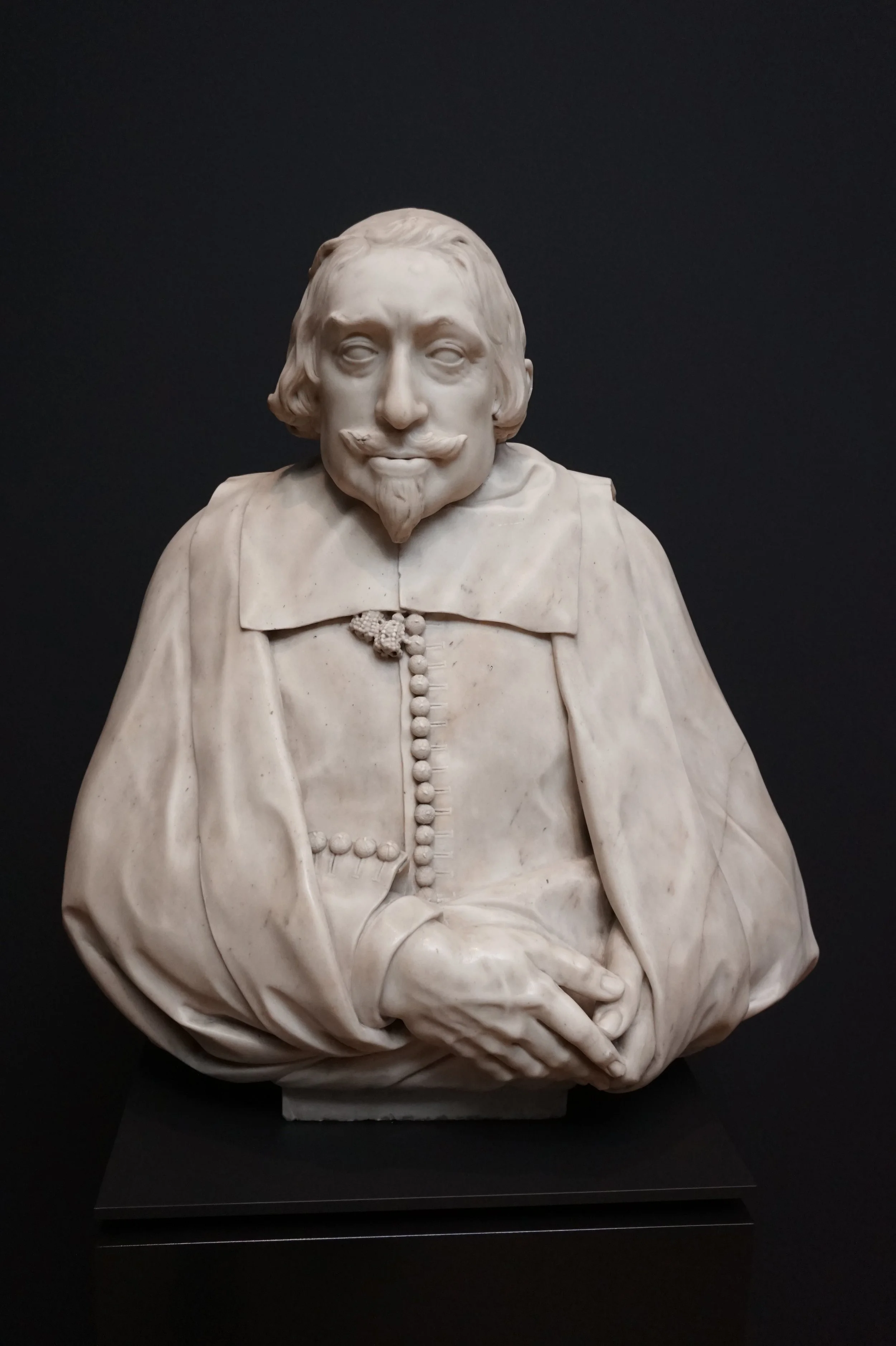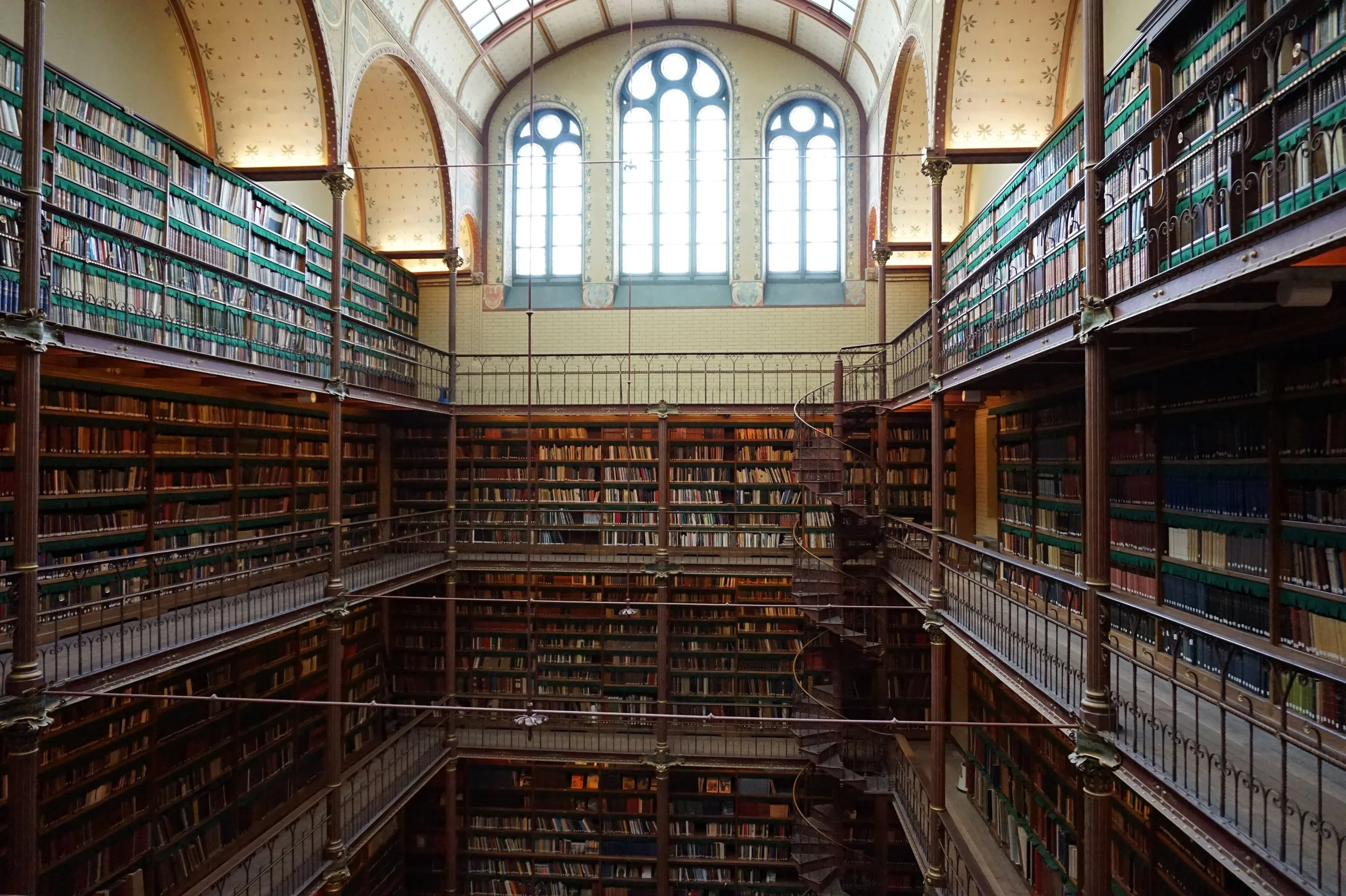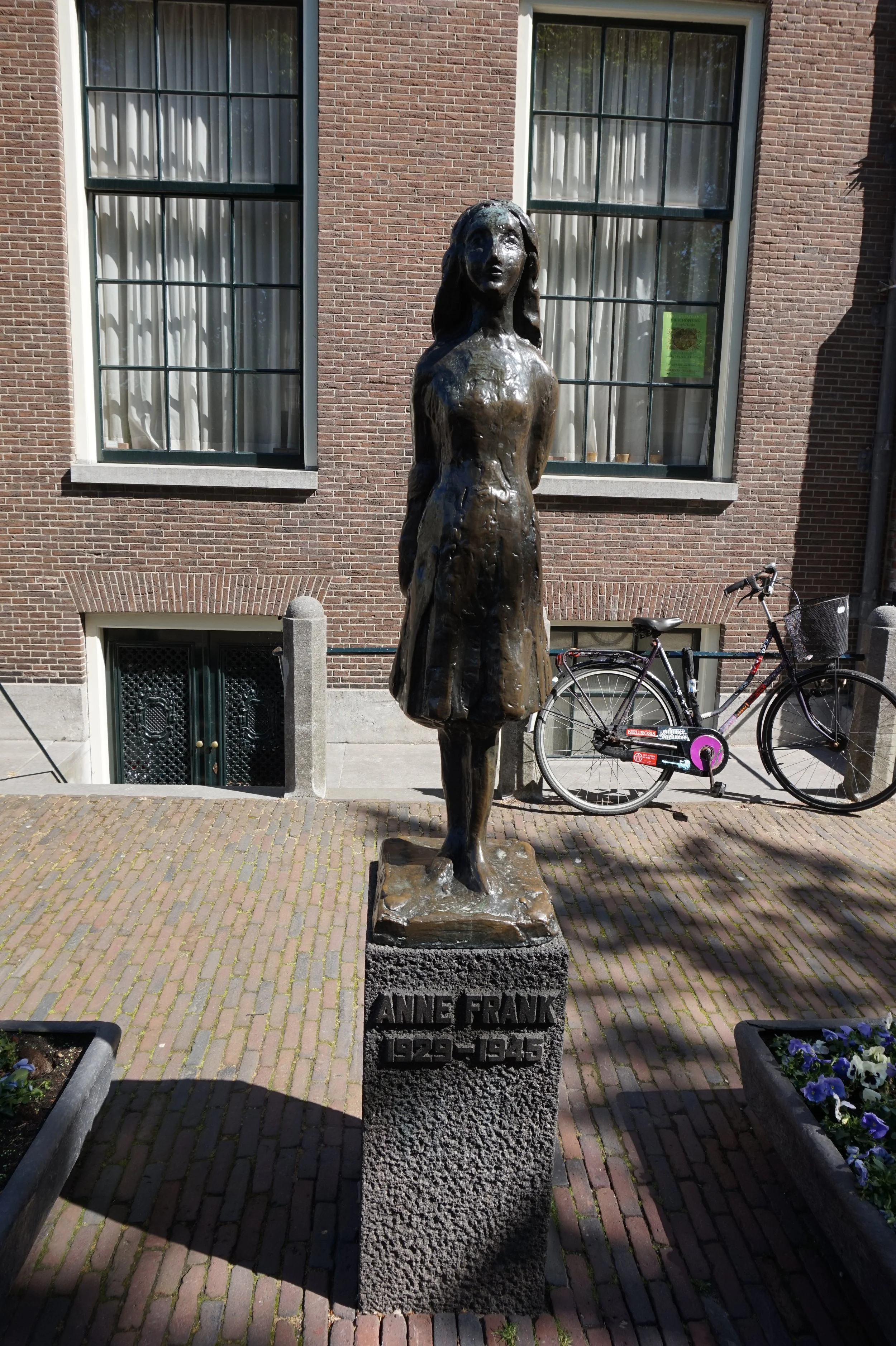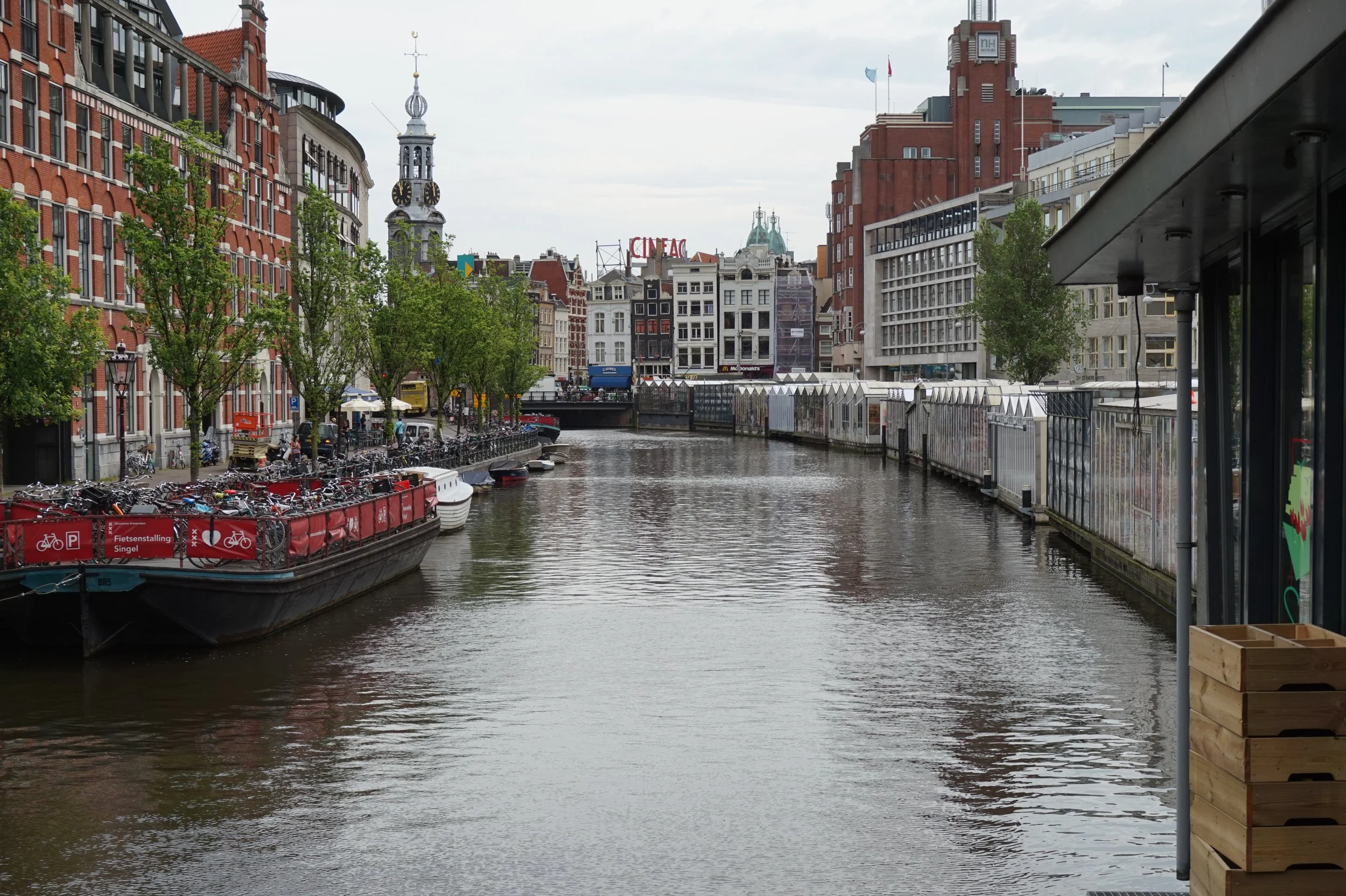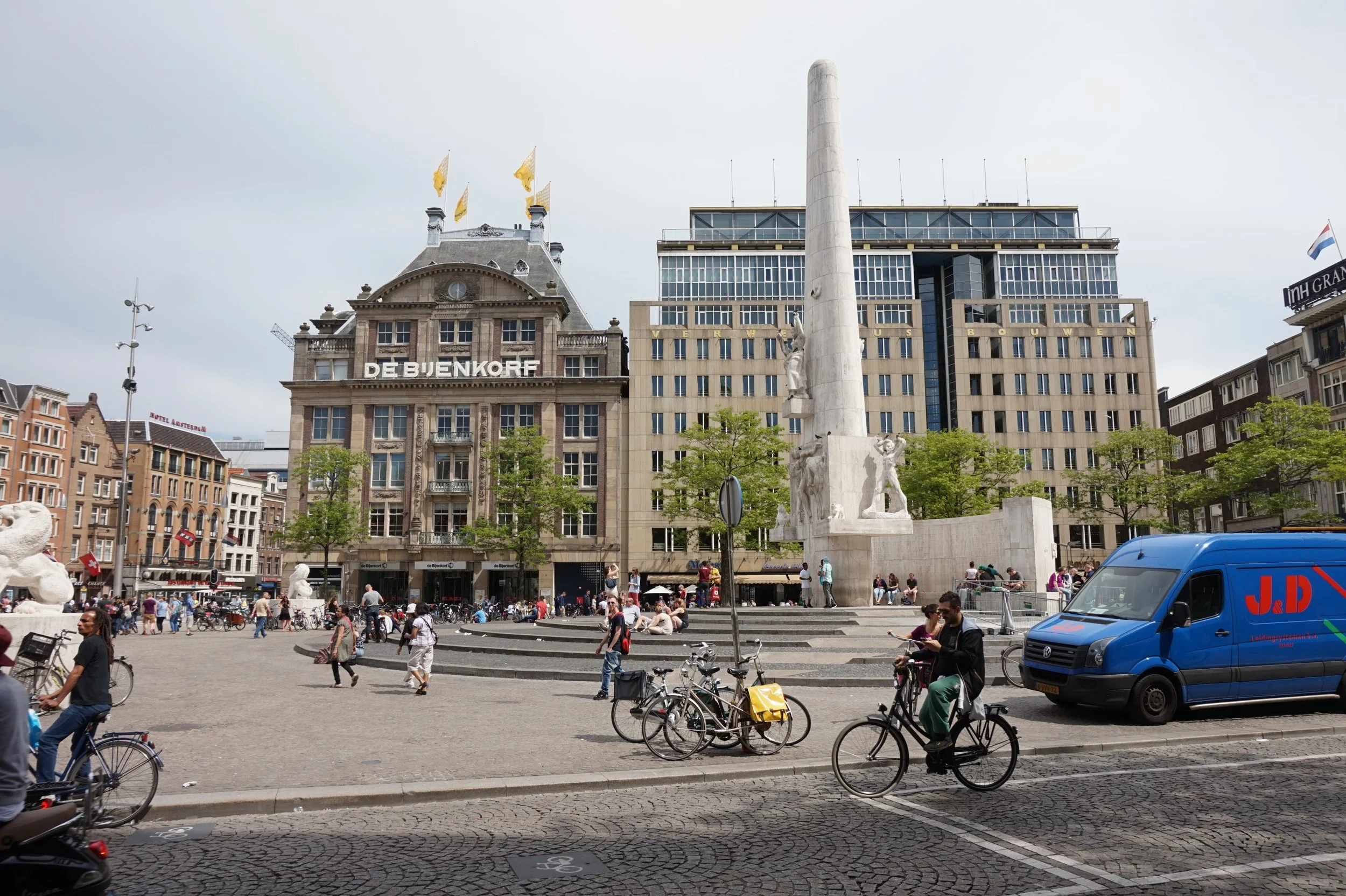Netherlands. Amsterdam: City of Bicycles
Amsterdam is among Western Europe’s most socially permissive cities. It’s home to world-class art museums, canals lined with colorfully painted houses, superlative restaurants, and tens of thousands of bicycles. The Netherlands’ capital and most populous city, Amsterdam, is in the province of North Holland and on the mouth of the Amstel River. In part because of its expansive canal system, the city is known as “Venice of the North.” Some famous residents include the artists Rembrandt and van Gough and the philosopher Locke. My students and I took a “red eye” flight that arrived at Amsterdam Airport Schiphol at 8:00am. There was no sense wasting our first day making up for lost sleep, so we set out to explore the city beginning with a visit to the Rijksmuseum, the national museum of the Netherlands. Located on Museum Square near the Van Gough Museum, the Rijksmuseum displays more than 8,000 items including paintings and sculptures that showcase the country’s history and culture. An example is the bust of Dutch diplomat Gerald Schaep van Cortenhoeff created by Bartholomeus Eggers (1637-1692). Held in high esteem for his public service, Cortenhoeff was elected mayor of Amsterdam eleven times. Elsewhere we found tall rows of bookcases that are part of Cuypers Library. Designed in Neo-Gothic style, Cuypers opened in 1885 and is today the country’s largest art history library with more than 400,000 volumes.
According to historians and archaeologists, the Romans never occupied the site of modern Amsterdam. The first settlement was a small fishing village founded on peat-covered land in the 12th century. To protect themselves from floods, residents constructed dikes on both sides of the Amstel River and in 1270, a dam was added that connected the dikes. After the 14th century Protestant Reformation, the town became a center for trade with Baltic Sea ports. At the time, herring was such an important trading commodity that a common saying was that Amsterdam was, “built on herringbones.” The city’s rise began in the 17th century when the Netherlands gained significant economic power. Ships belonging to the Dutch East India and Dutch West India companies linked European ports with destinations in North America, the Baltic Sea, Brazil, and southeast Asia. Conflicts with England and France in the 18th and 19th centuries were responsible for the country’s loss of economic power. The city also suffered during the mid-20th century. Following an invasion by Nazi Germany in May 1940, more than 100,000 Dutch Jews were deported and murdered in concentration camps. Today, Amsterdam has a reputation for open-mindedness and tolerance. It is also a city of bicycles: 900,000 bikes for 800,000 residents.
Among our most unforgettable stops was the Anne Frank House. The Franks were Jews who had migrated to Amsterdam from Germany. Between 1942 and 1944, Anne and her sister Margot along with Anne’s mother and father, hid from the Nazis in a 42 square meter attic space concealed behind a bookcase. Former employees of Anne’s father brought the family food and other supplies. In November 1944, the family was discovered and deported to concentration camps. Shipped to Auschwitz in Poland, Anne and her sister are believed to have died from typhus. Anne’s father survived the war and returned to the house where he discovered his daughter’s diary. In 1947 he published Anne’s writings as, The Diary of a Young Girl. Located on Prinsengracht Canal, the Anne Frank House opened for tours in 1960. Today, its annual visitation exceeds a million.
Another stop was De Wallen, Amsterdam’s medieval city center and largest “red light” district which features 300 one-room cabins rented to prostitutes. The district is adjacent to Oude Kerk (Old Church), now used as an art institute. Our group passed scantily dressed women standing behind large windows. Another Amsterdam novelty are its coffee shops where patrons can purchase cannabis, food infused with cannabis, but not coffee.
Located adjacent to the city’s first dam, Dam Square is the city’s historic center. On one side of the square is De Bijenkorf, the flagship location of a national chain of high-end department stores. Next door is the Hotel Krasnapolsky which was built in 1855 and has 402 guestrooms and suites. We paused at the center of the square to view National Monument, a 22-meter-high column covered with white stone that honors Amsterdam residents killed during WWII. Completed in 1956, the column contains ashes of persons murdered by the Nazi occupying forces.
Constructed during the 17th century, Amsterdam has 100 kilometers of canals, 1,500 bridges, and 90 islands. Forming large concentric circles connected at one end to IJ Bay, the city’s four principal canals are the Prinsengracht, Herengracht, and Keizersgracht. Running parallel to the canal channels are tall and narrow buildings known as grachtenpanden (canal houses), some with a slight lean to their front (canal) side. Called “dancing houses” by locals, the forward lean wasn’t caused by sinking, but rather, as an intentional design element that simplifies the movement of large furniture to upper floors. Most canal houses are narrow because of a 15th century tax based on a building’s canal frontage. An odd source of water pollution in Amsterdam comes from 15,000 bicycles pulled from canals each year in what local residents call “bike fishing.”

